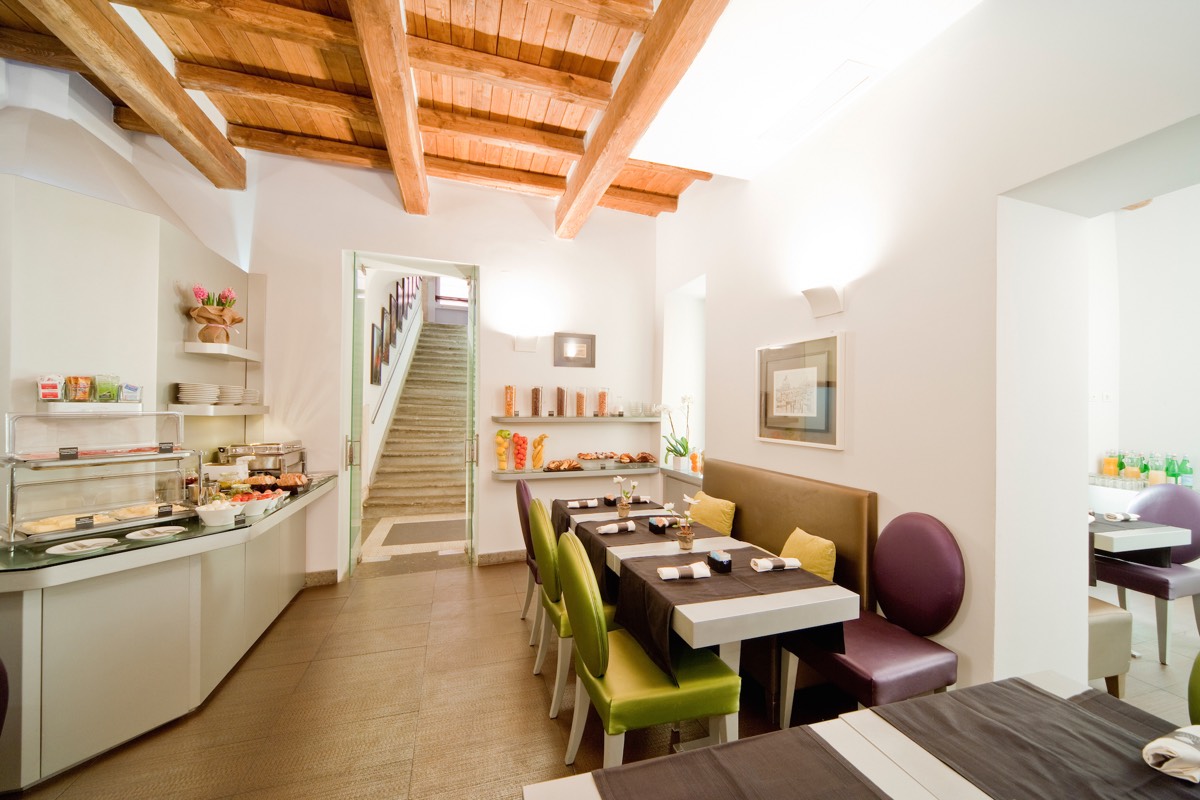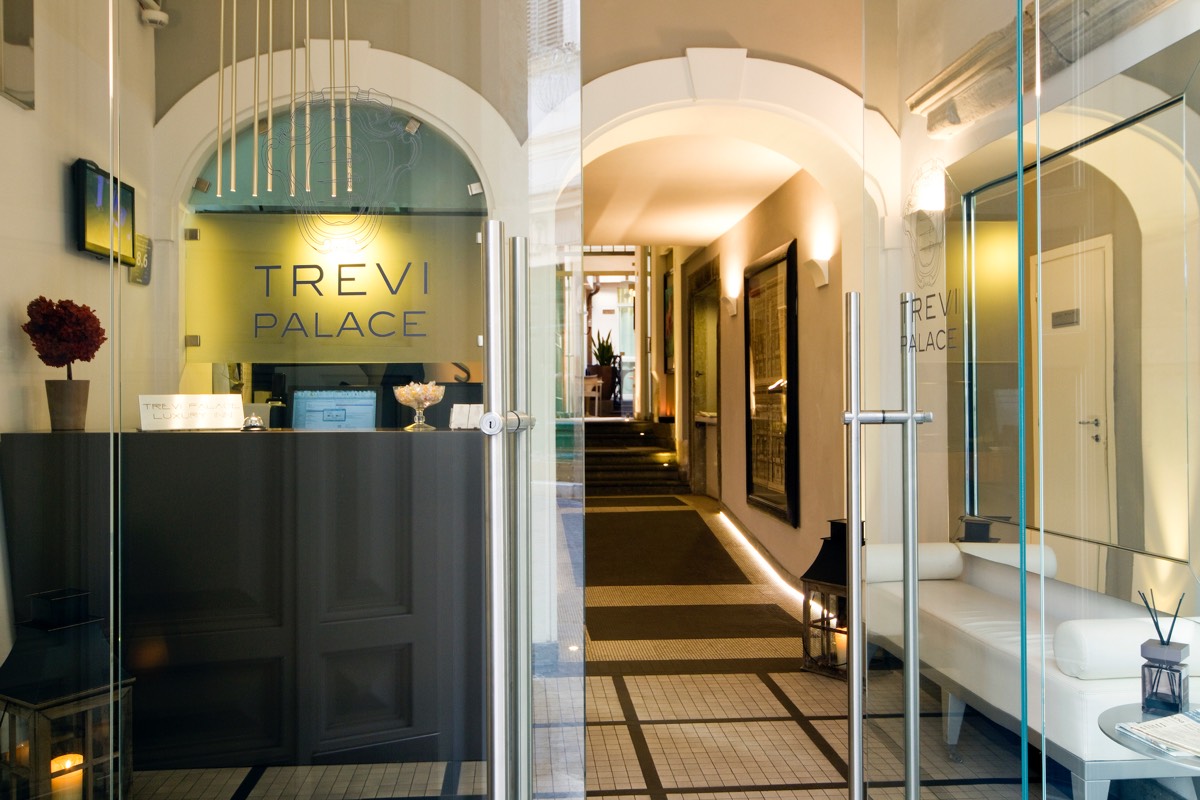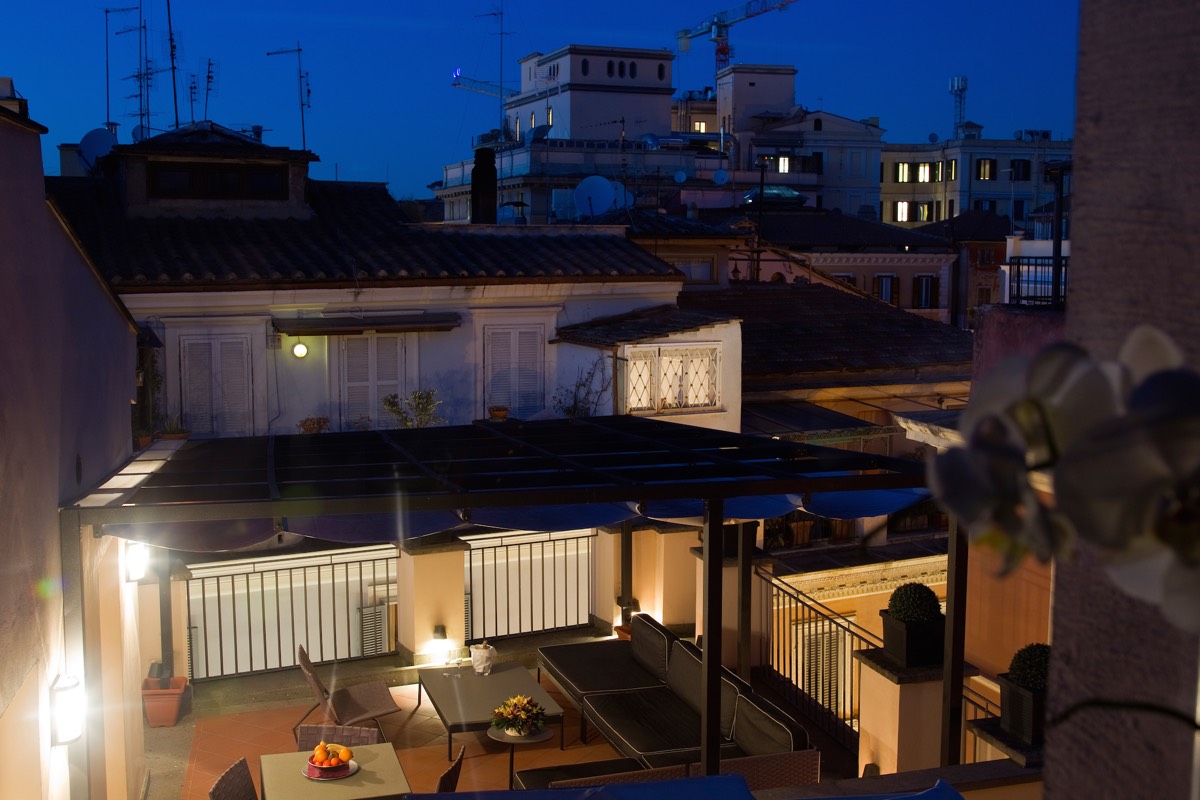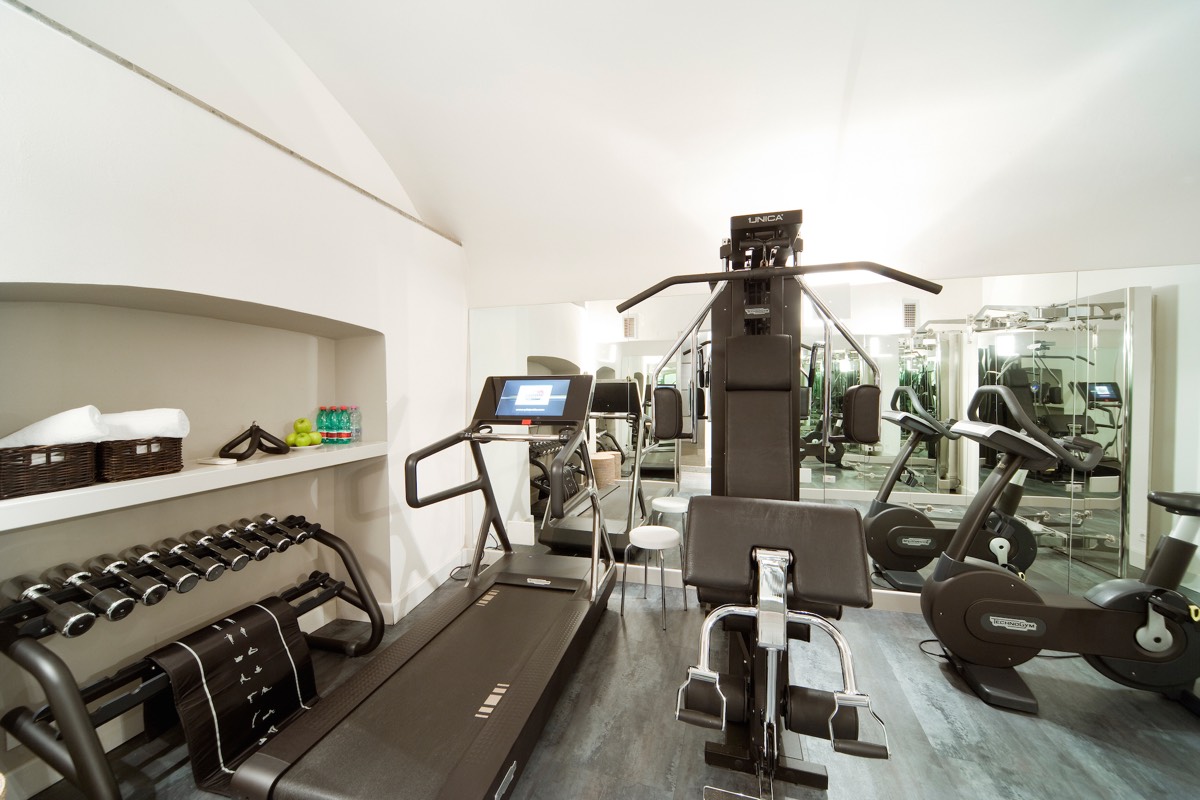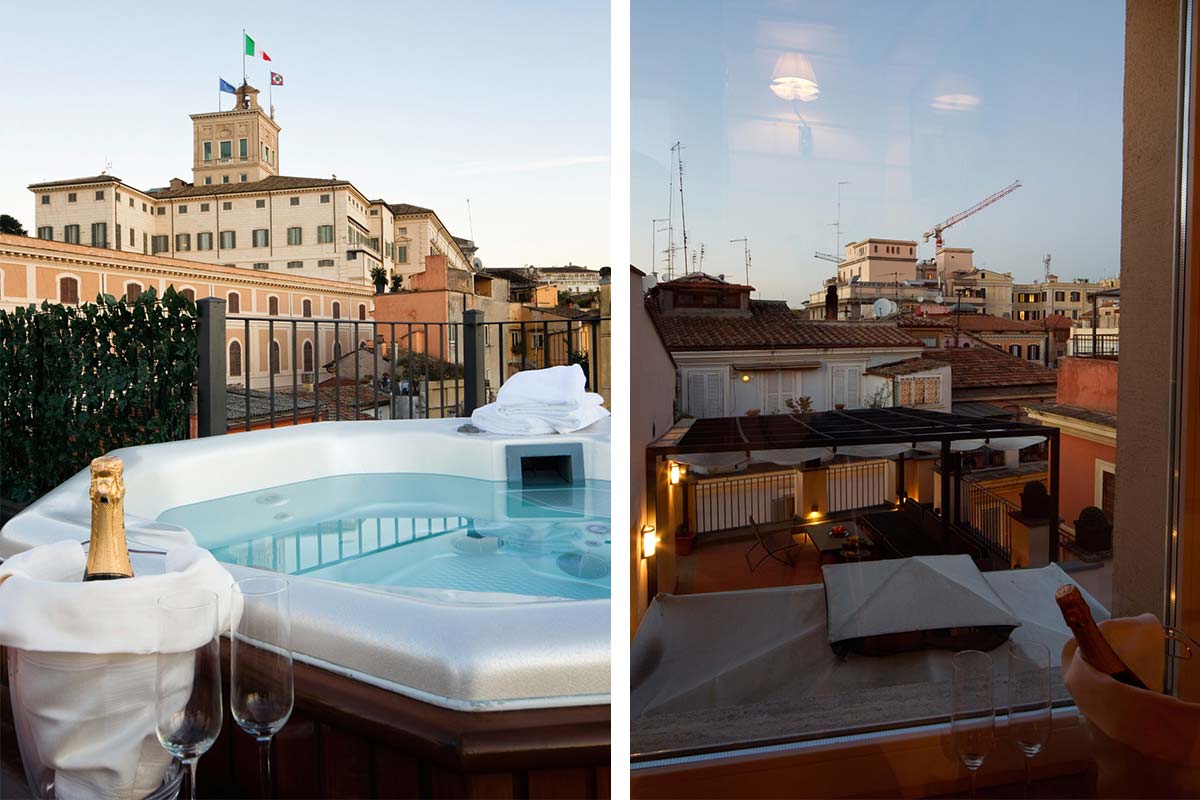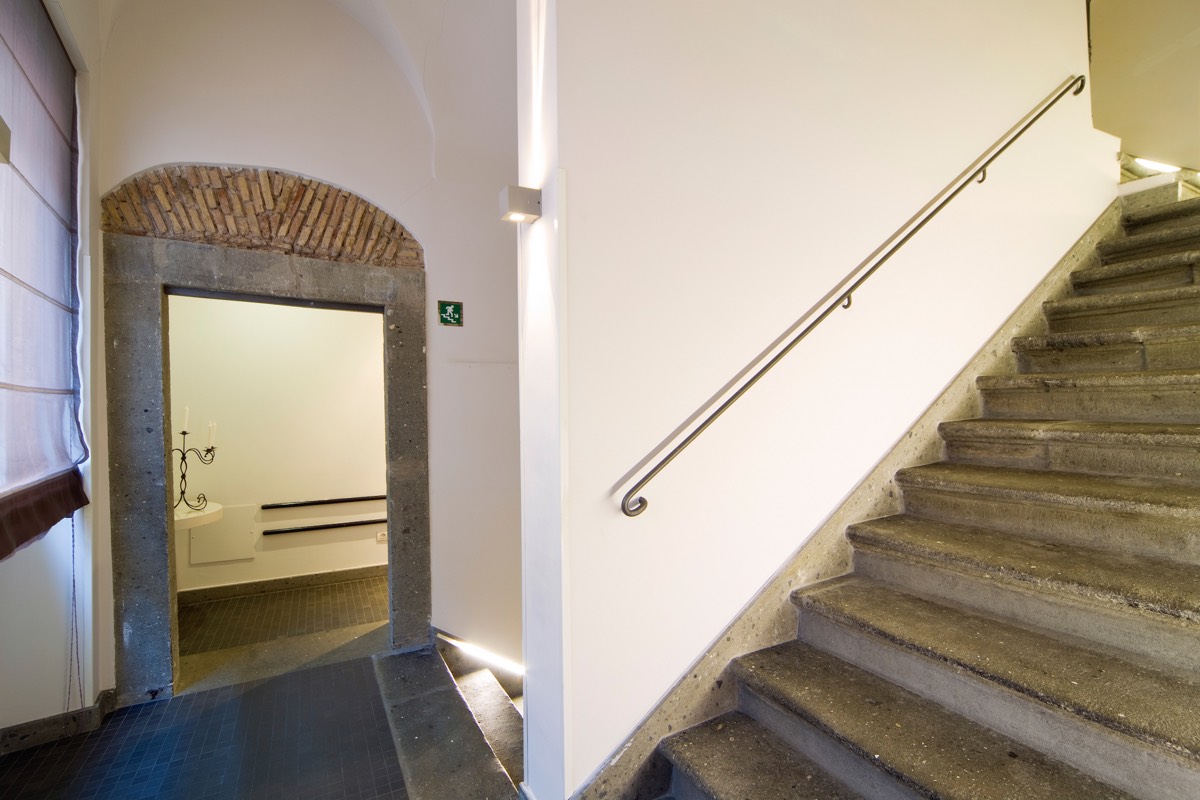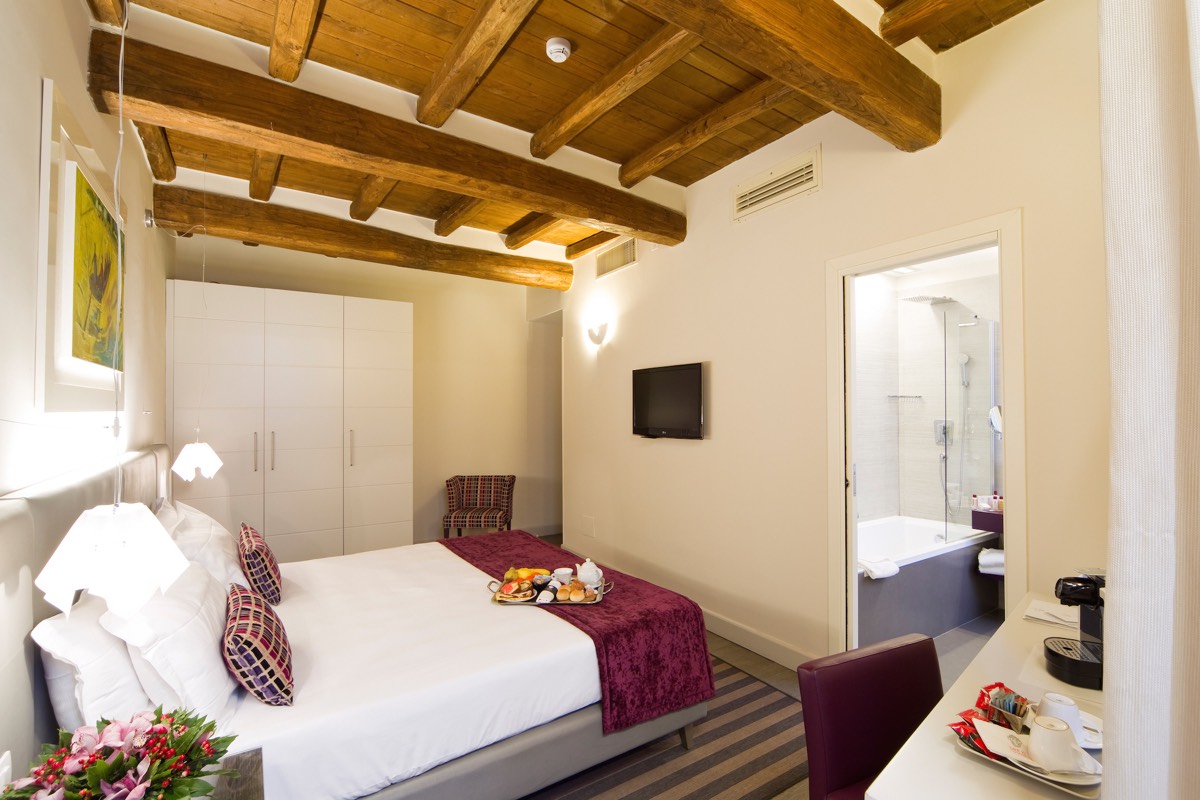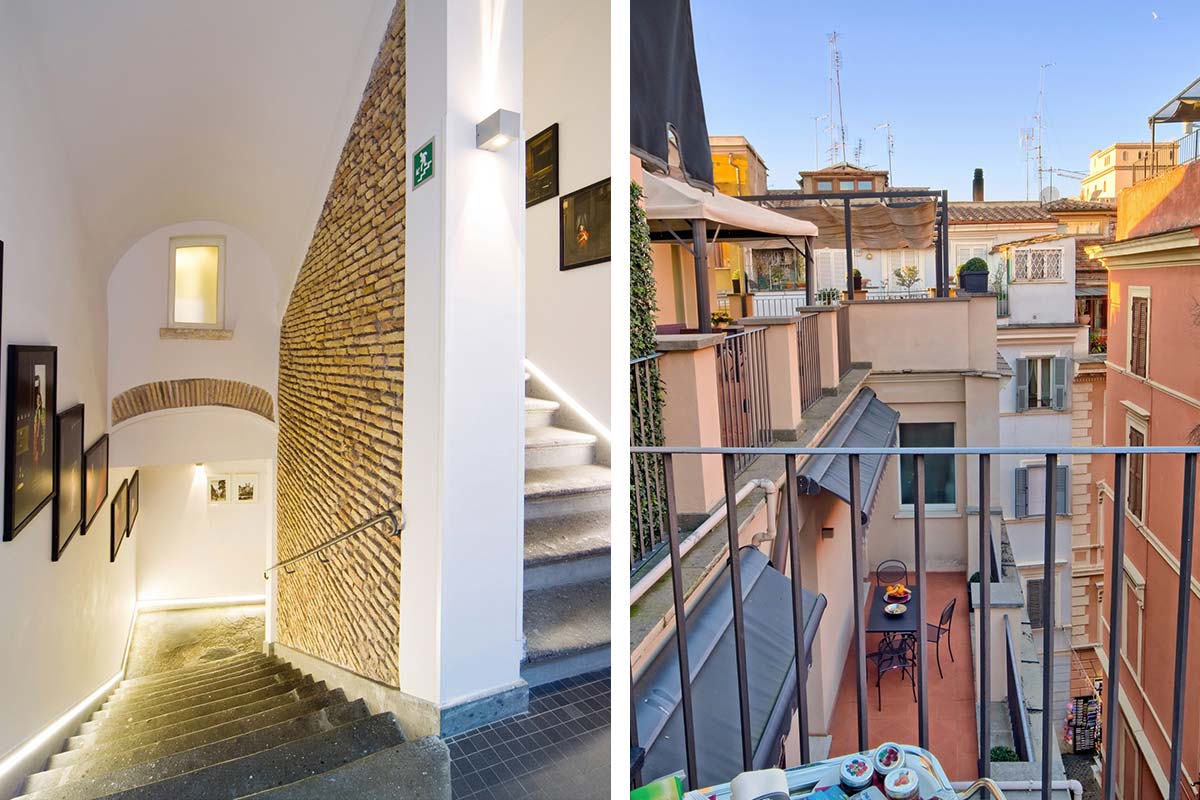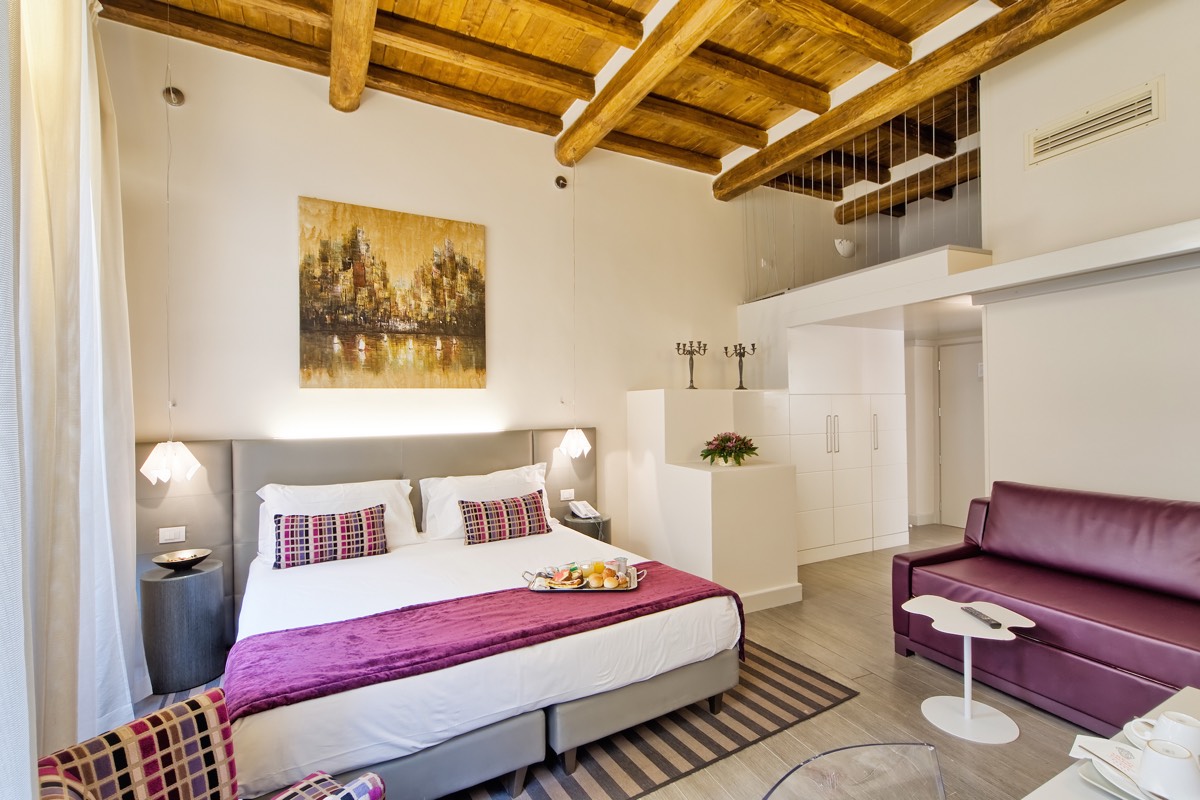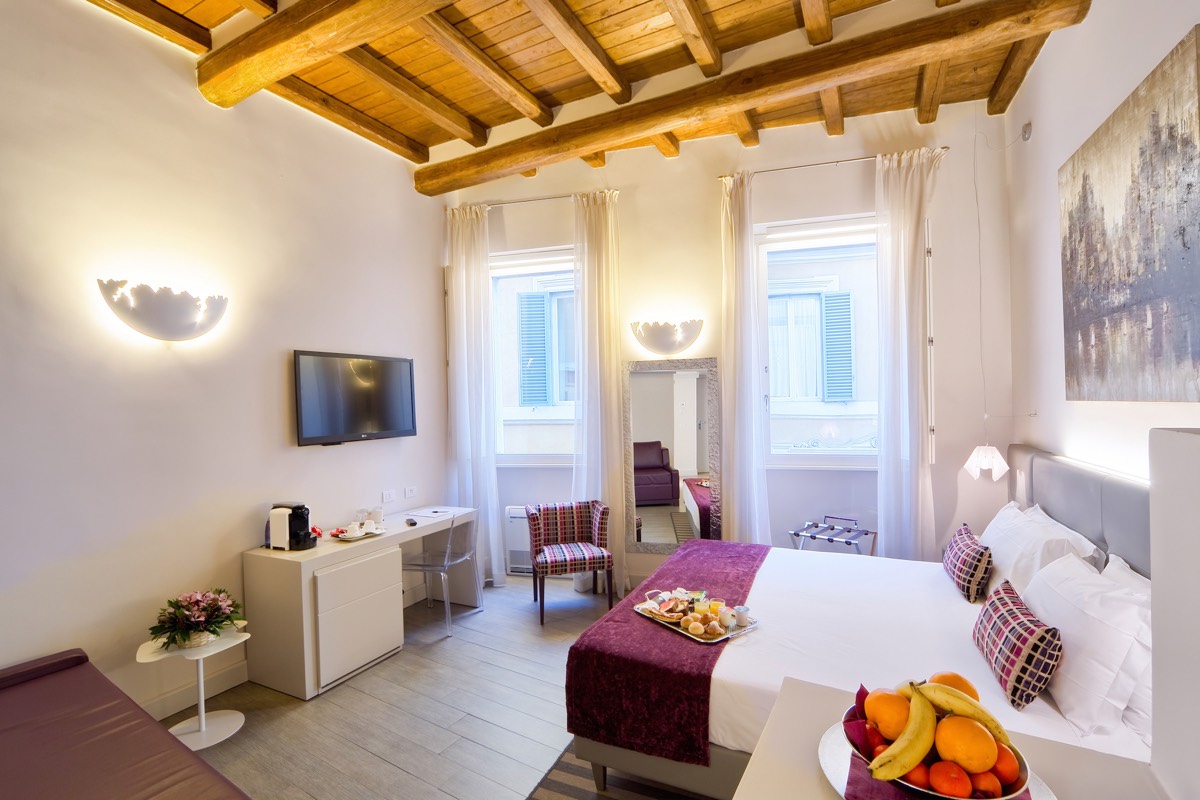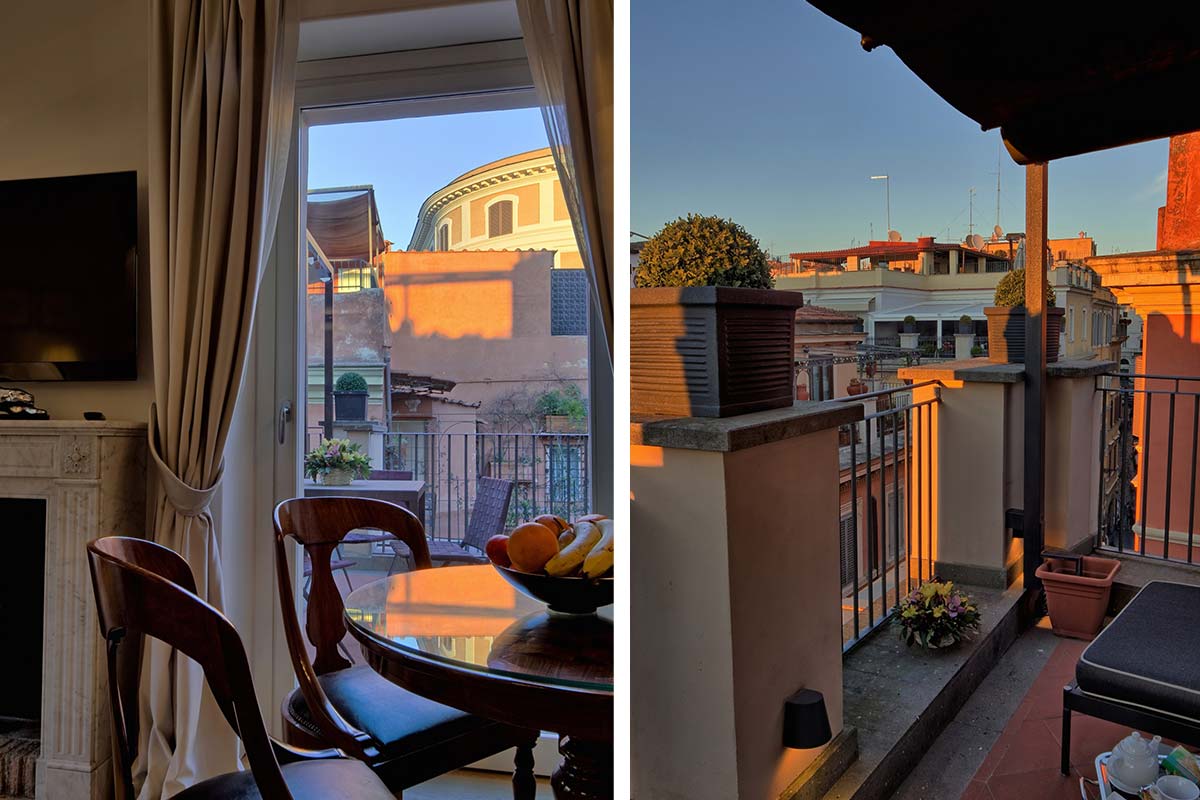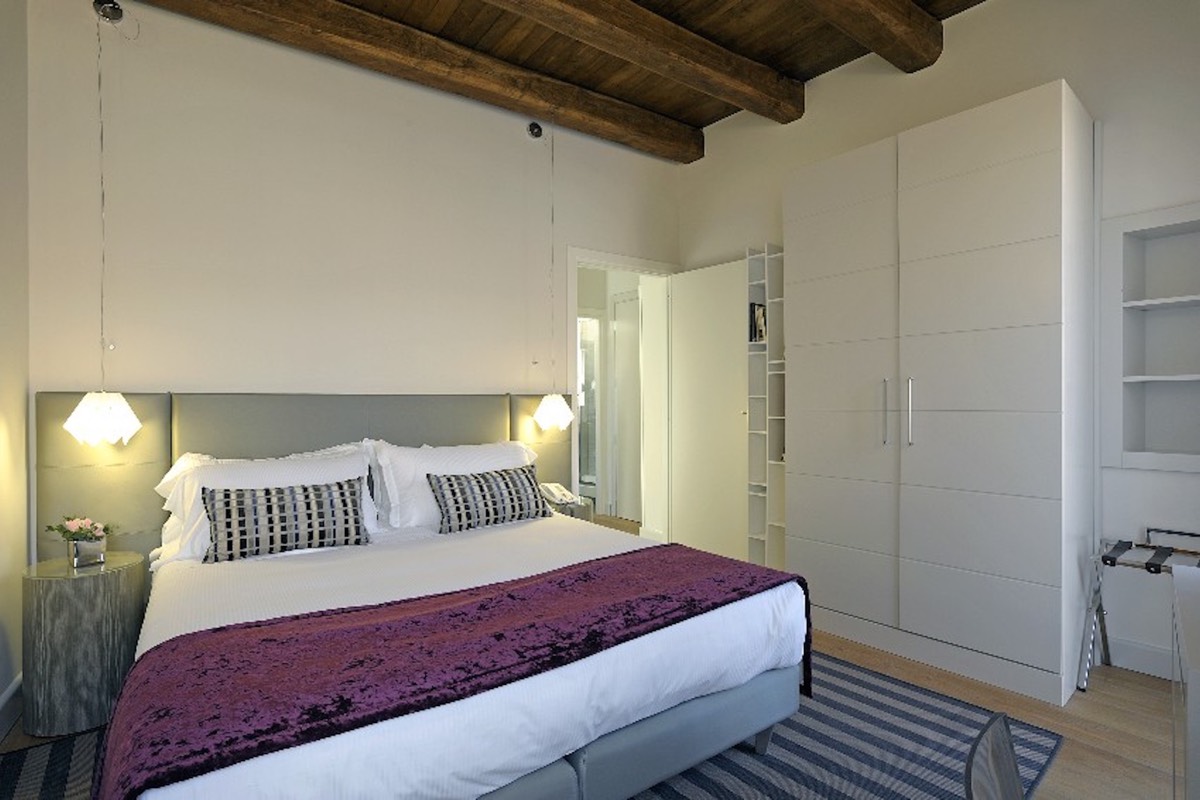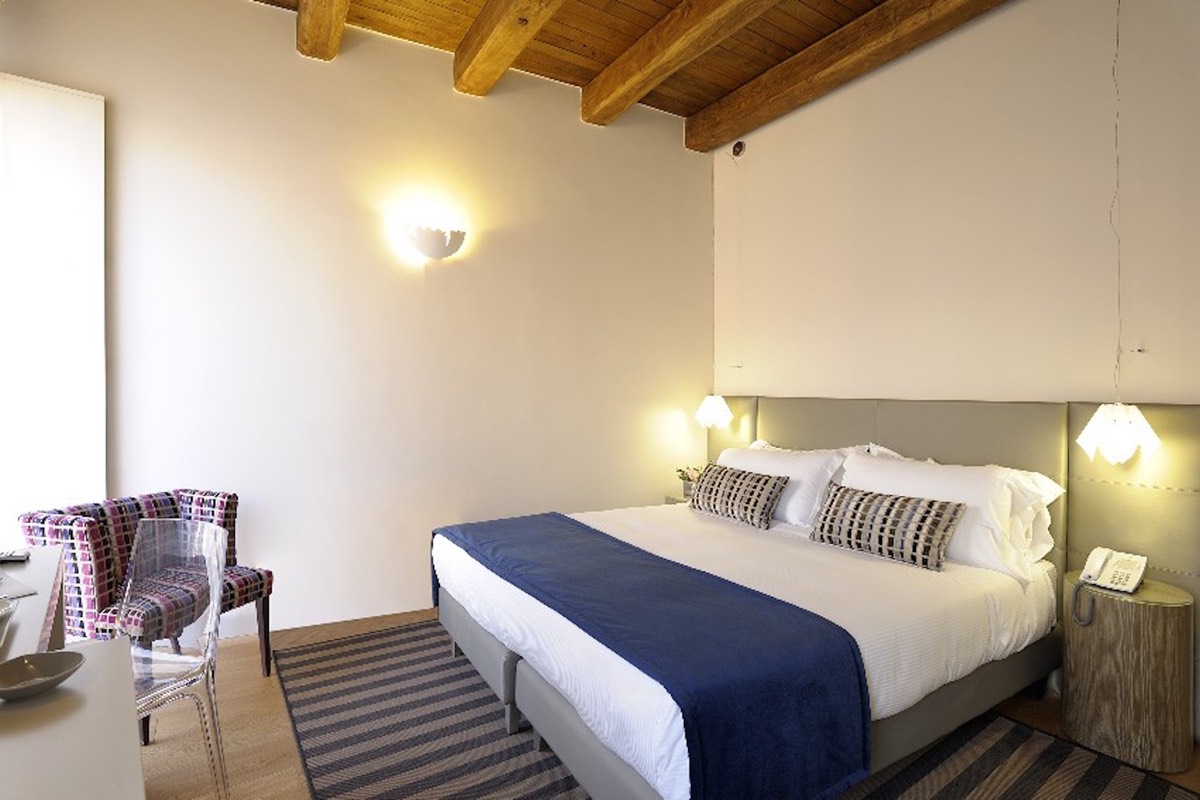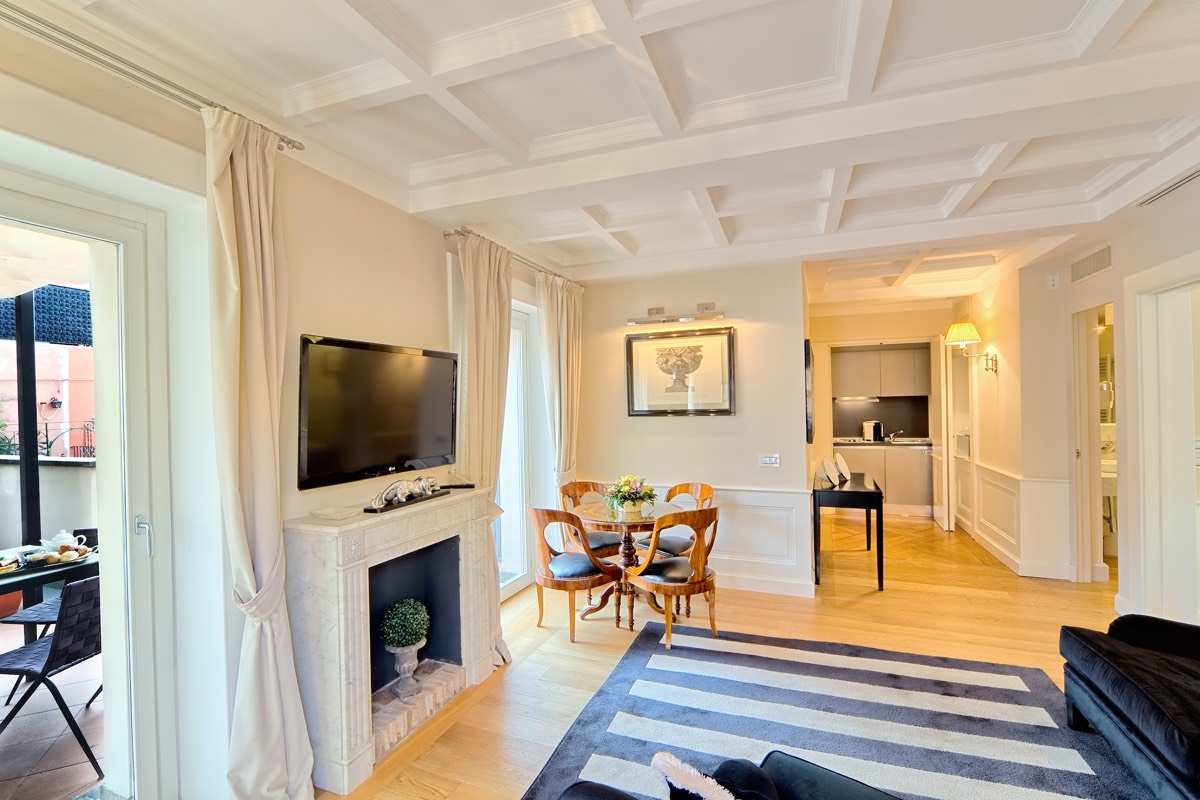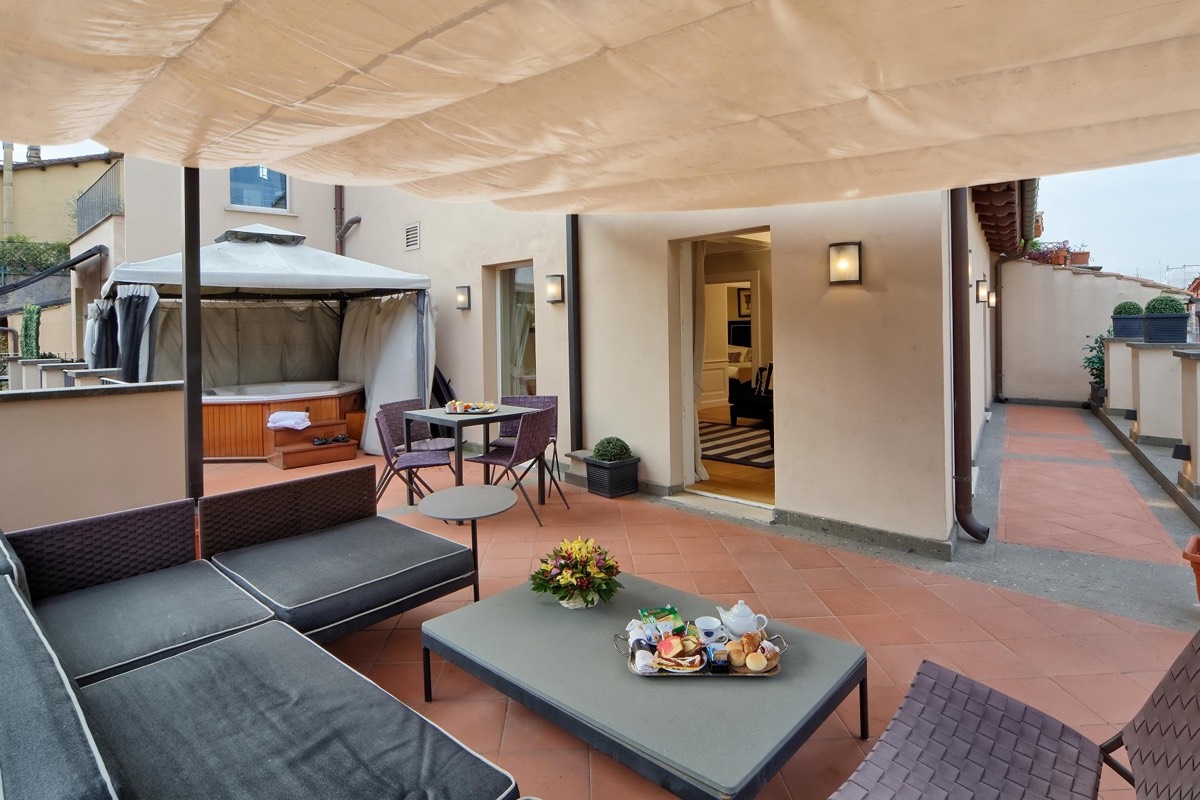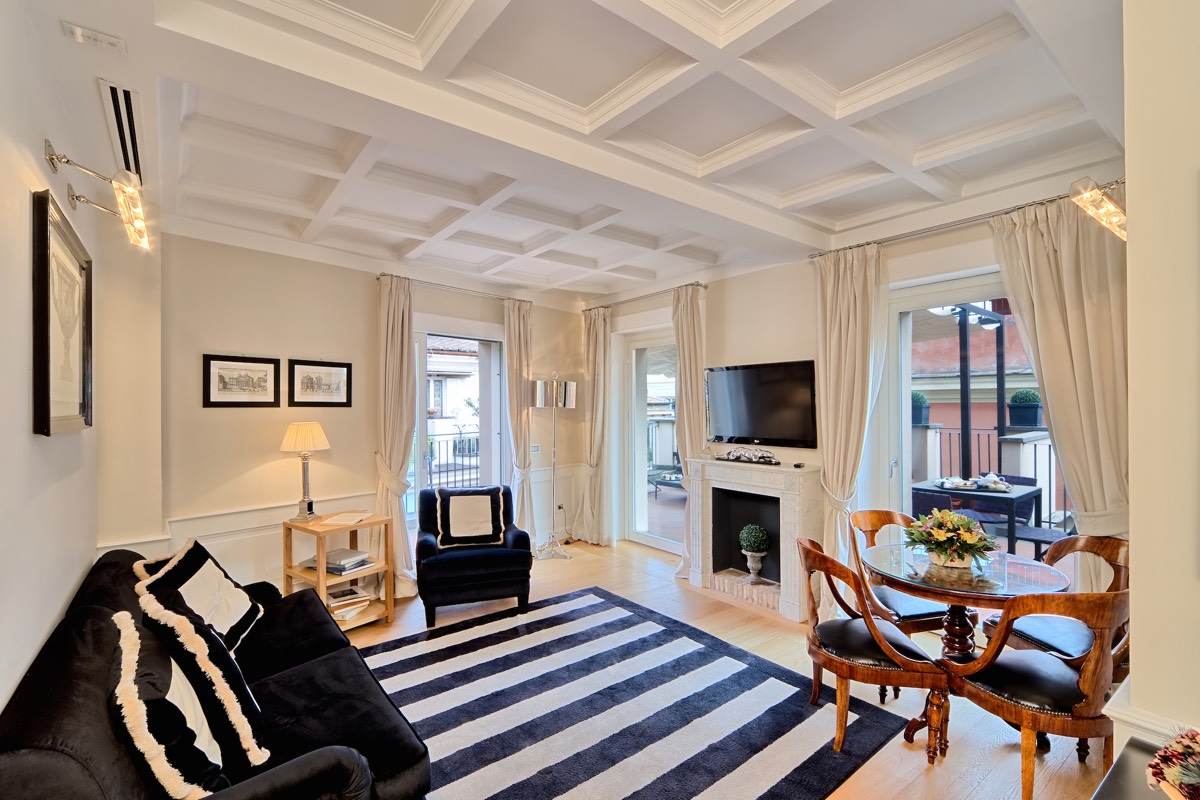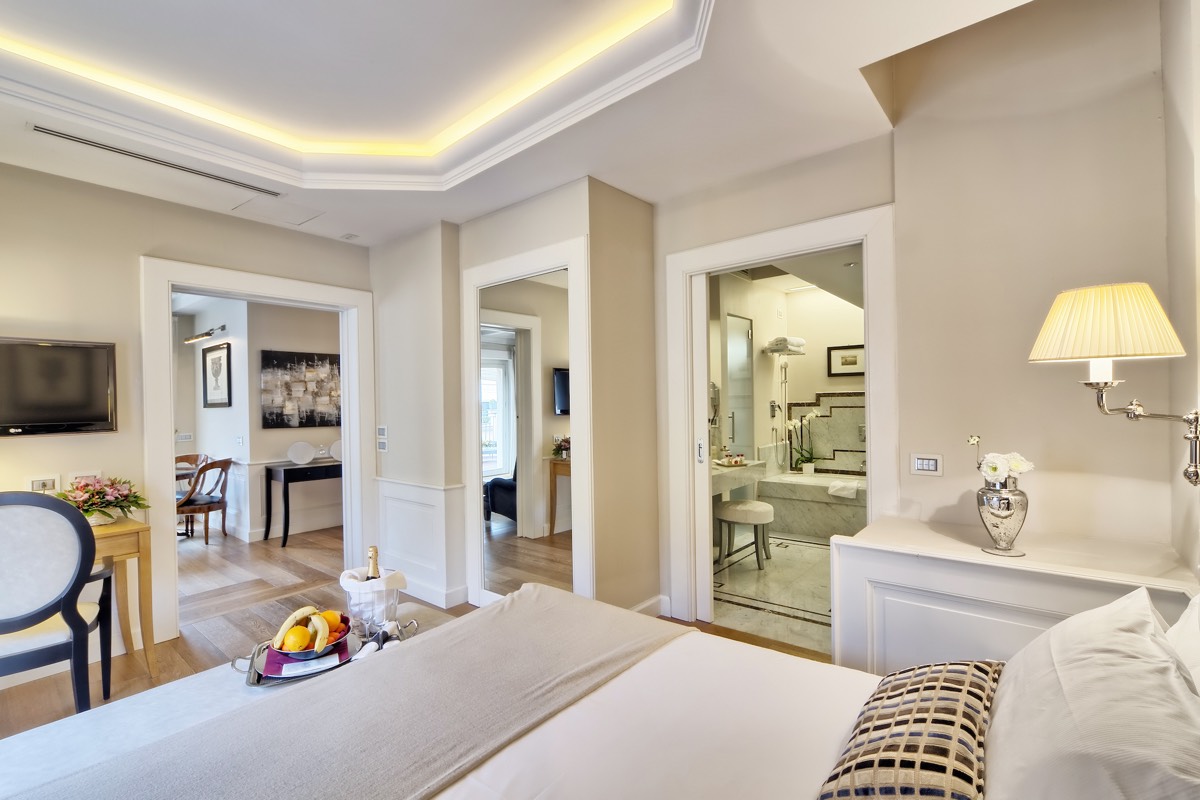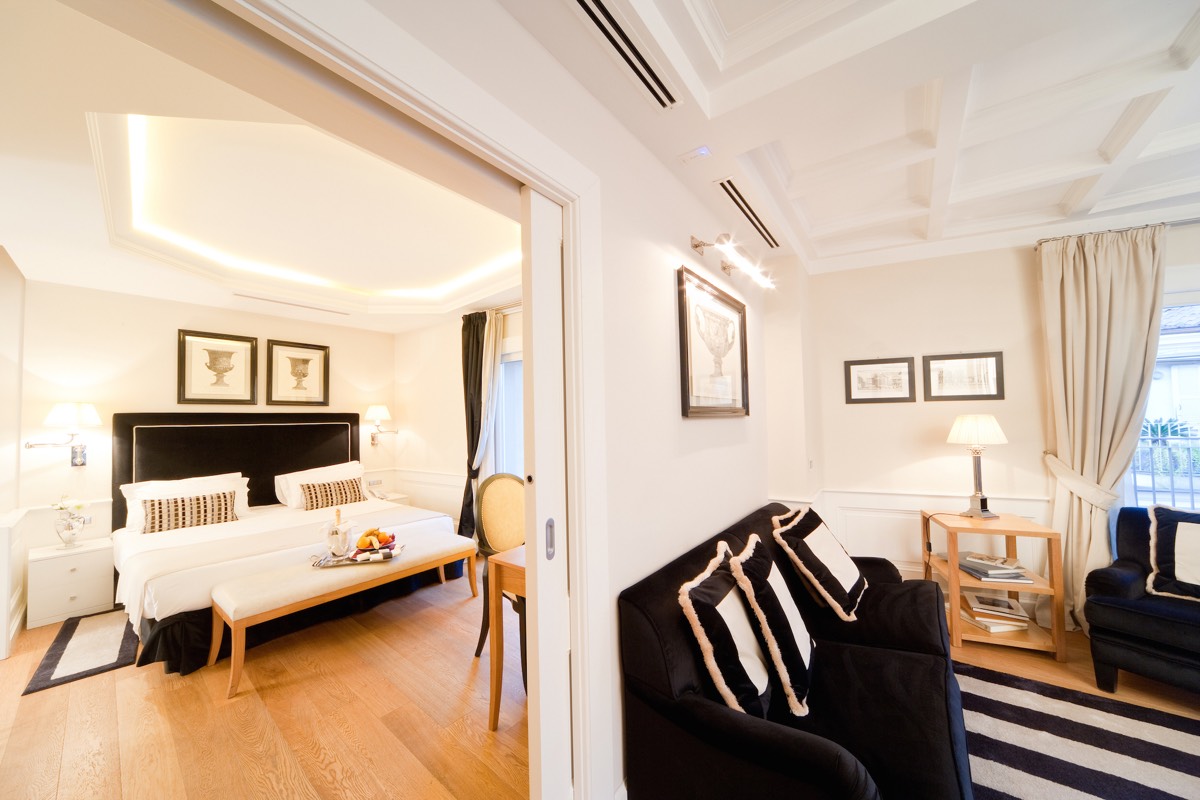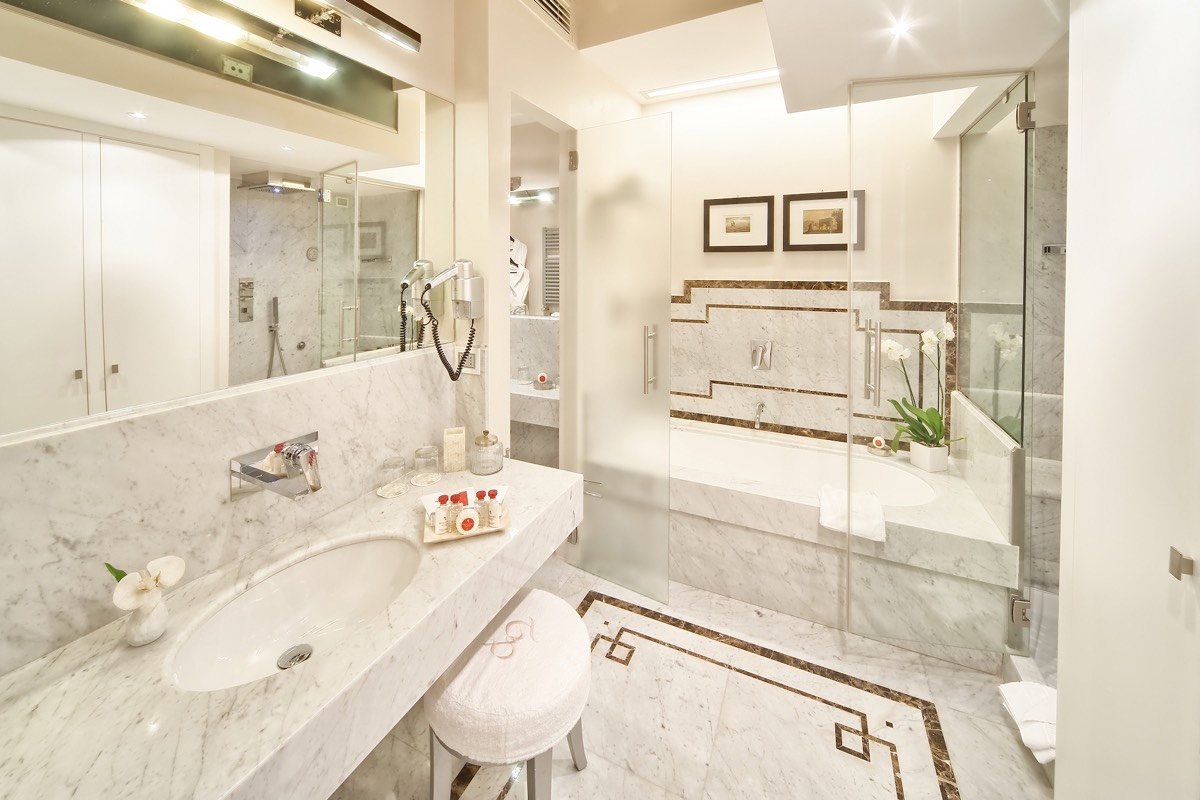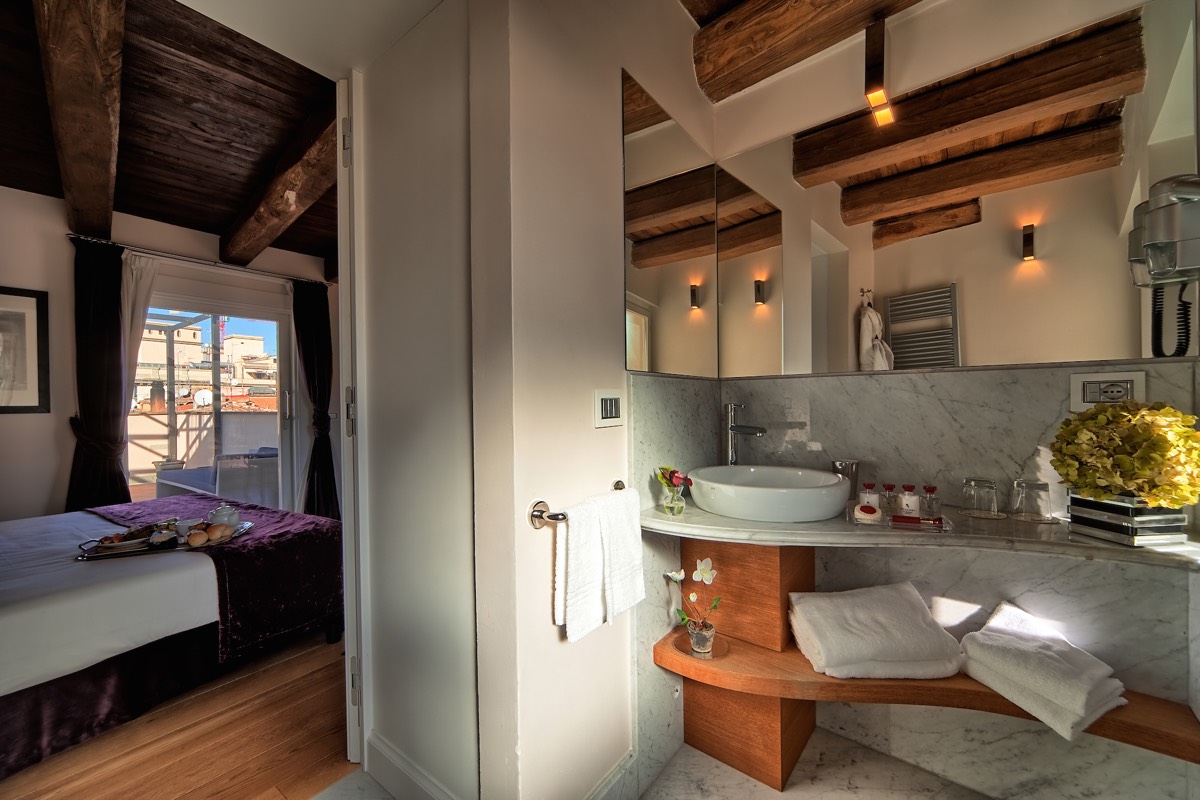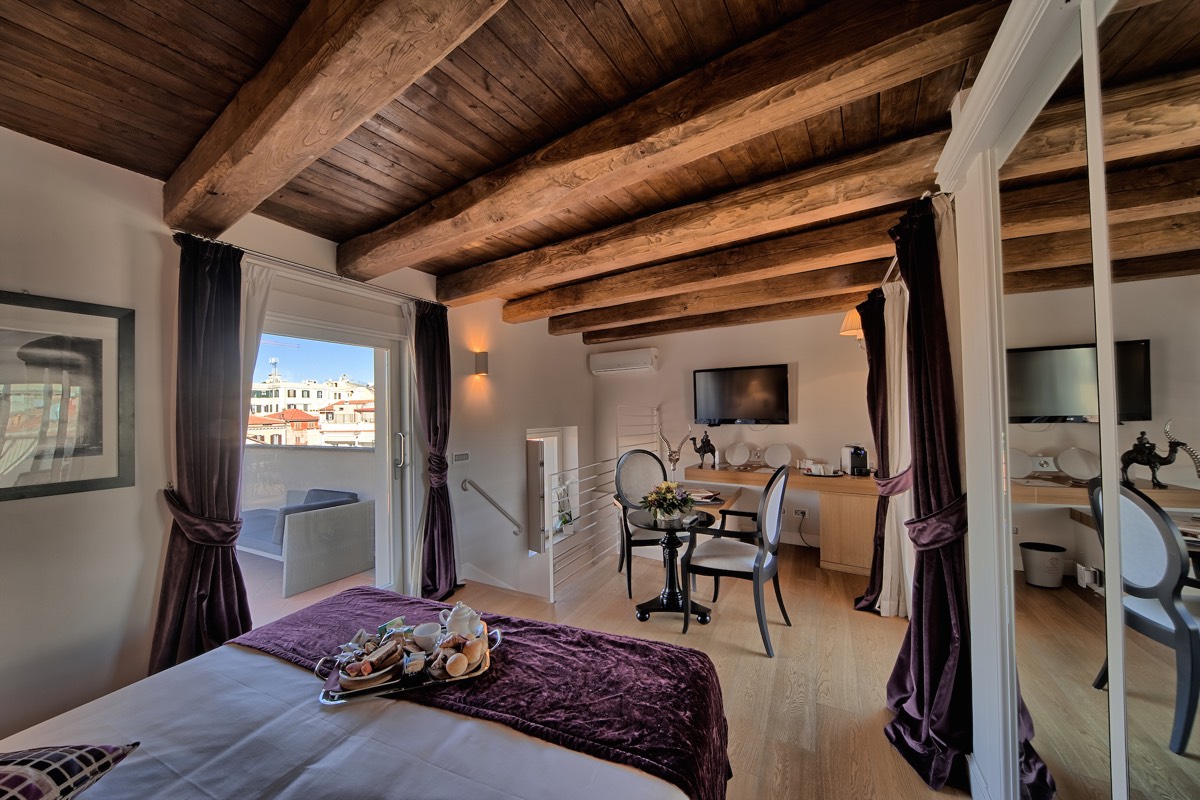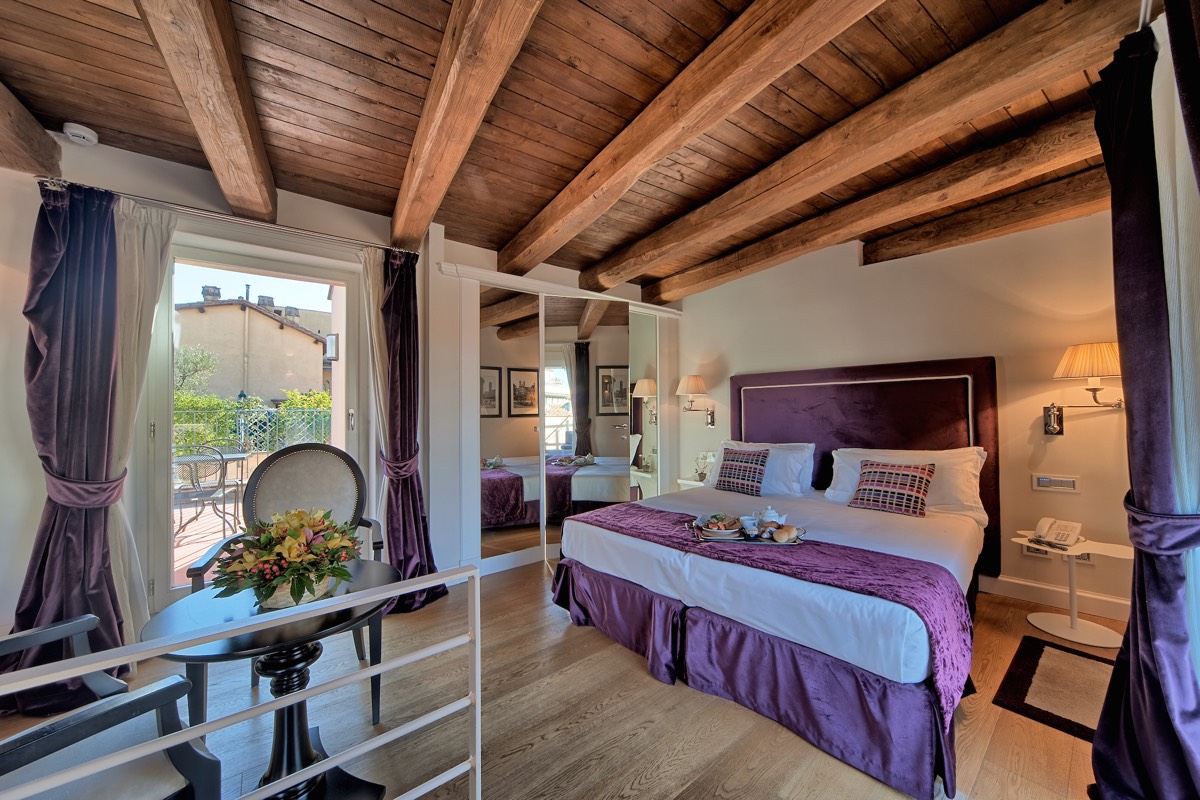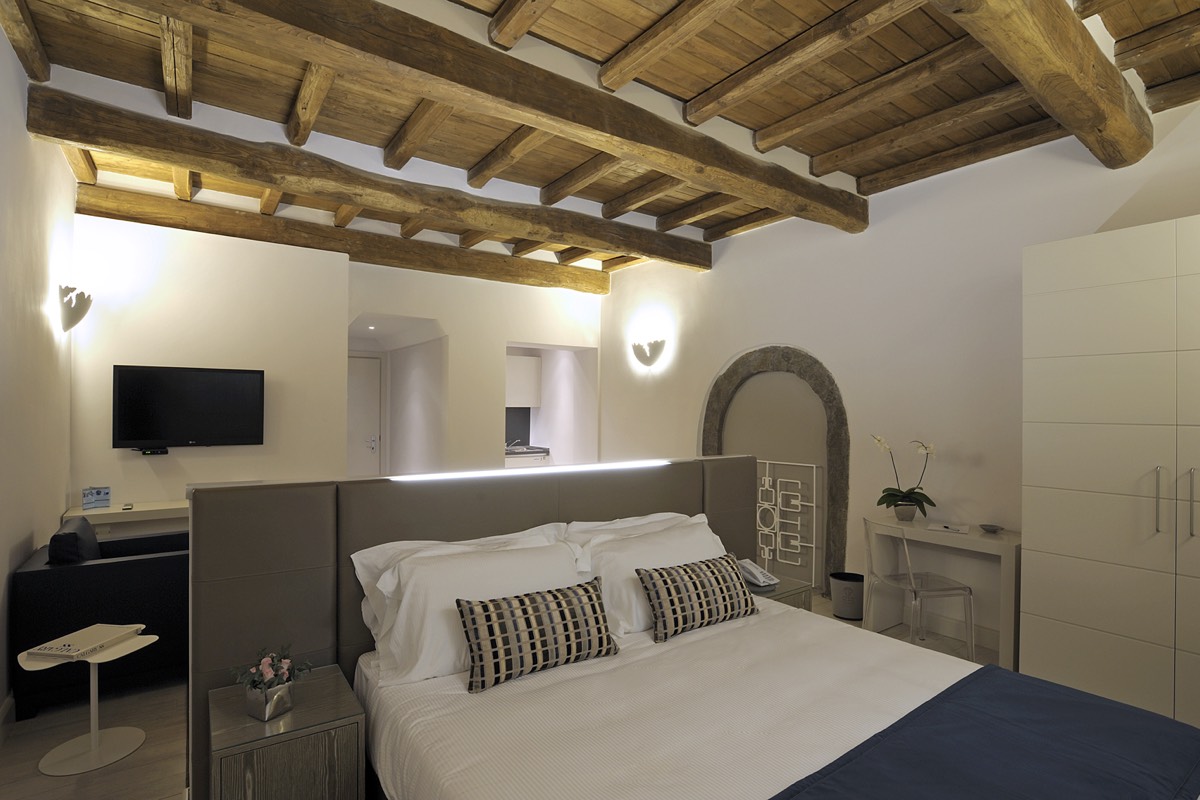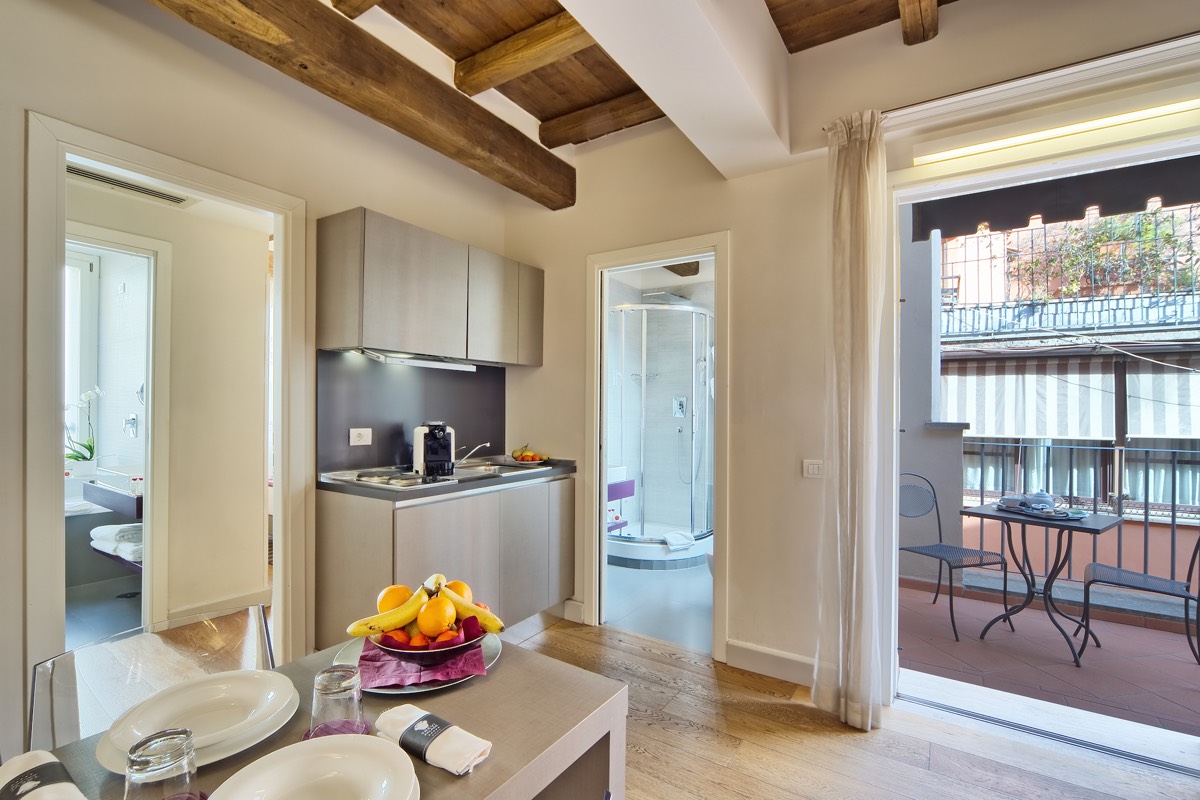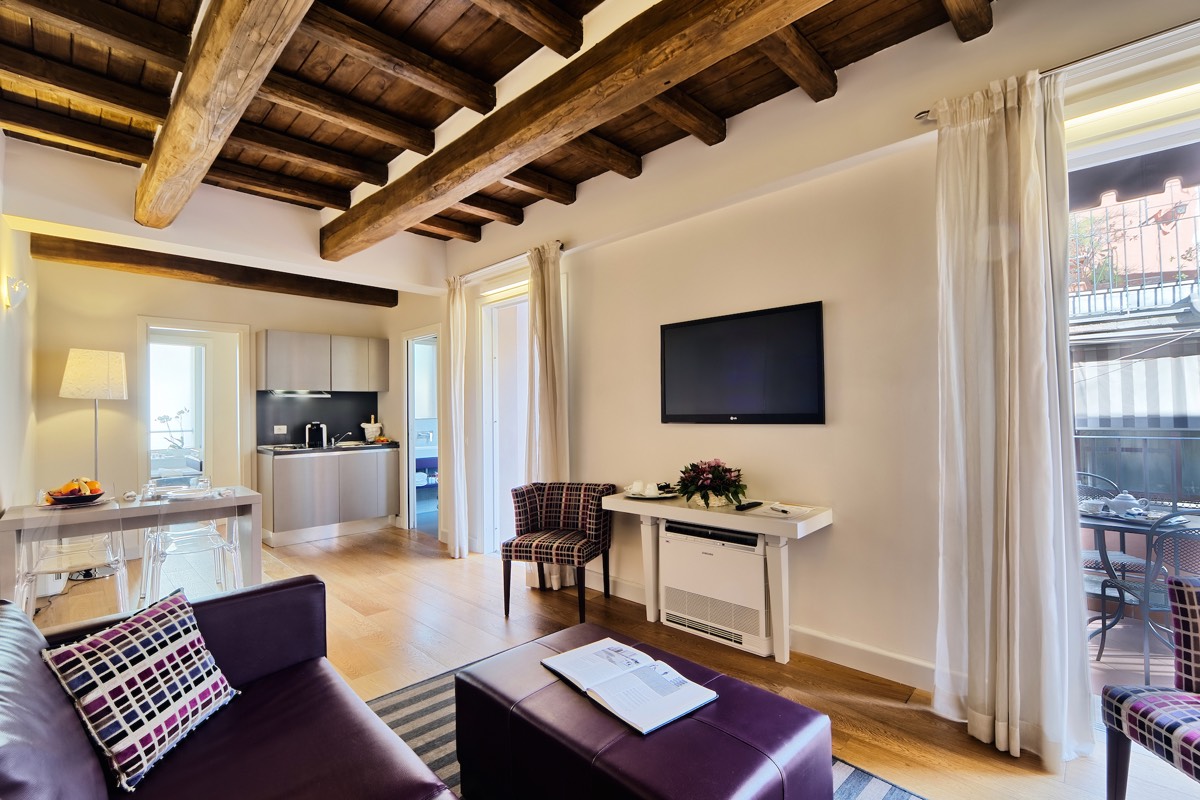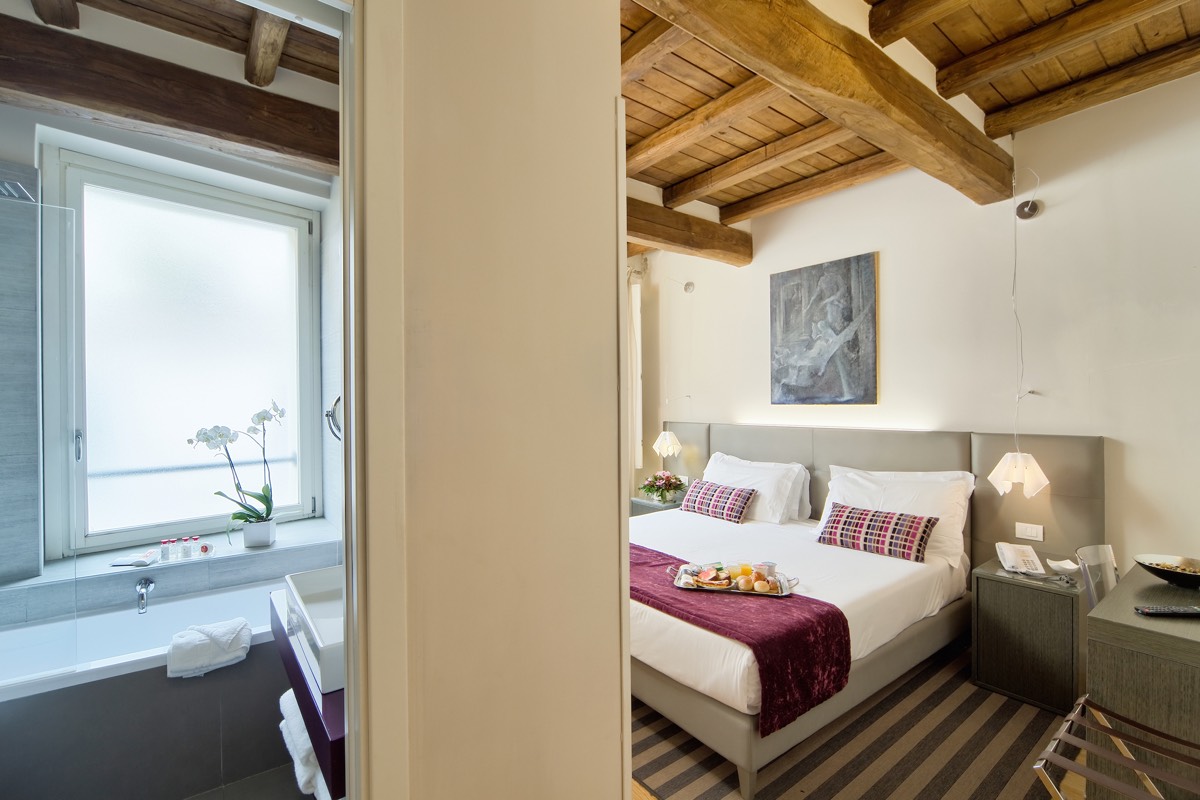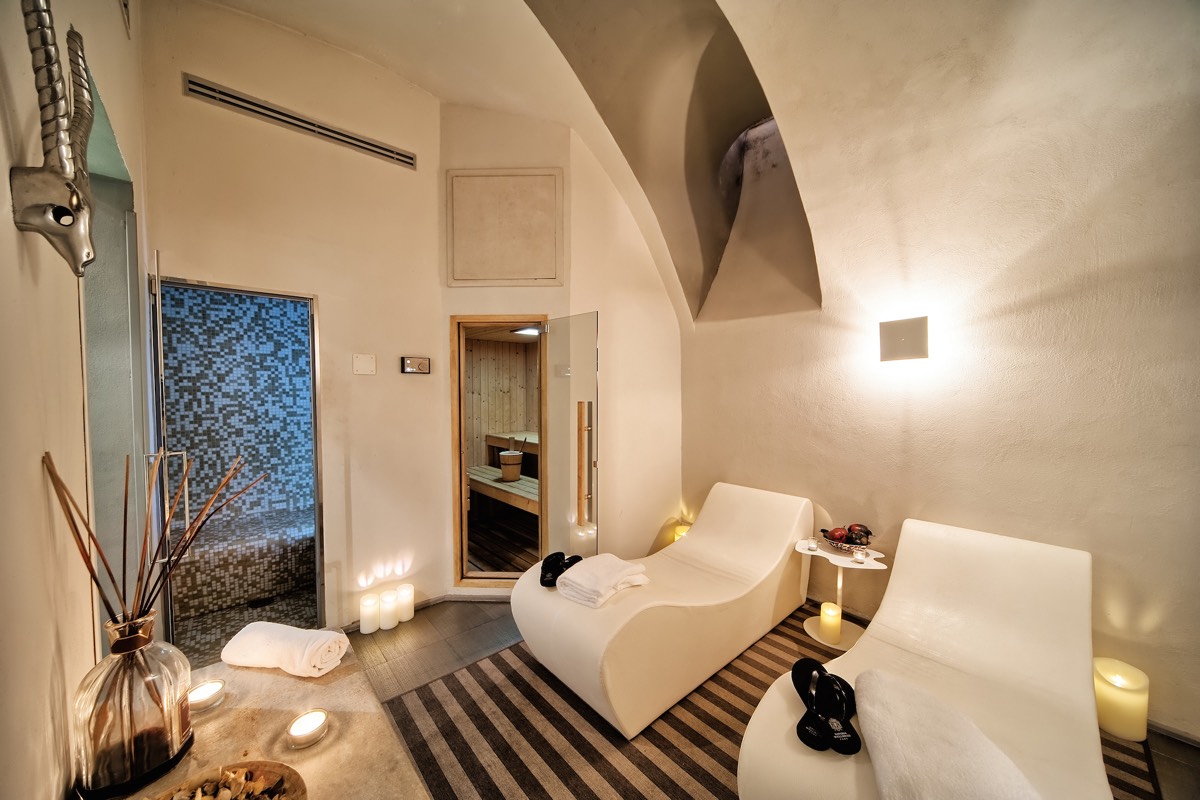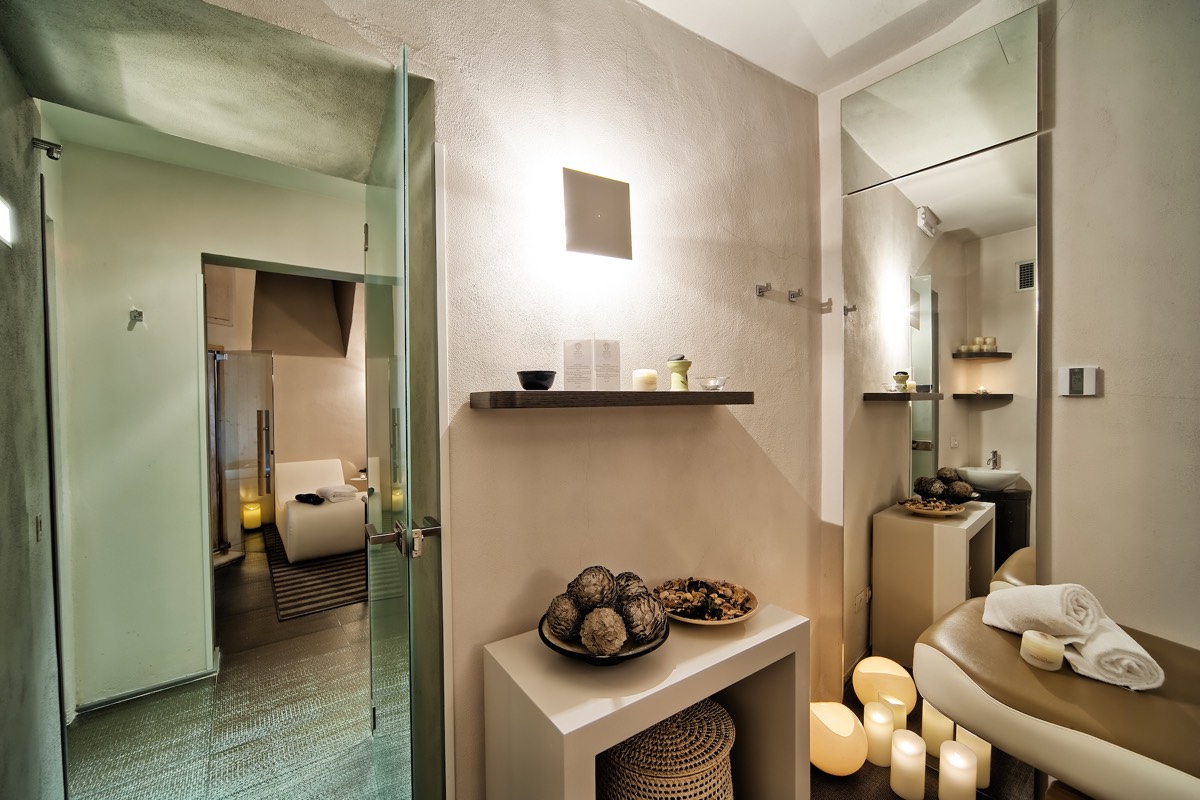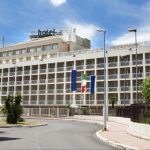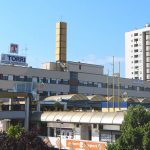
TREVI PALACE
DESCRIPTION
The Palazzo is located in Rome’s historic centre. Just a few steps away from the Trevi Fountain, it has its main entrance from Via del Lavatore and a façade with shops in Vicolo Scanderbeg. Via del Corso and Via del Tritone, the main streets of the historic centre, as well
as the marvelous Piazza Colonna and Piazza del Quirinale, are just a stone’s throw away.
Giovanni Battista Nolli had included the Palazzo already in the historically very important map of Rome that he drew in 1748. The present shape of the Palazzo probably dates back to mid-17th century, and today we can admire it in its old and new splendor thanks to the restoration works that have enhanced all traces of art still existing in the premises. The main entrance in Via del Lavatore is composed of a 18th century travertine portal; through its bright magnificence we are led to the main hall where various architectural elements of white veined marble (probably recovered from antique buildings dating back to the late imperial age) have been brought back to their ancient beauty. The same room hosts the bases of the pillars of Roman travertine that once decorated the ground floor and the main floor and that still give light to the stately staircase made of peperino stone.
The ground floor of the Palazzo leads into another world, when we enter the small inner patio through the ancient (and somewhat disquieting) grille of wrought iron and find an iron cast (probably manufactured in the 19th century) which is the copy of an older portrayal of Abundance: Ceres, the goddess of harvest and the Earth (of which she is a personification), holding a big cornucopia with various fruits. In one of the apartments on ground floor, it was even possible to salvage one of the earliest elements of the entire building, dating back to the first construction on this site: a big arch of peperino stone still showing the ancient routes and the openings of the building to the outside; this was also the task of the antique marble-framed window looking (through its original grid) onto this first flight of the grand staircase. In the basement floor we find string courses in peperino stone from the town of Marino, brackets in white marble and other elements of decoration.
Going up the old steps of the grand staircase, we then find the antique peperino portals that served as entrance to the various wings of the Palazzo and that have now regained their former magnificence. In this central area of the building, we can also admire antique sills under the windows as well as decoration elements from the 17th and 18th century (in peperino or Roman travertine), which were lucky enough to be rediscovered and brought back to their former splendor thanks to a meticulous and accurate restoration project aiming at preserving the original features of each individual piece. Each stone element was subject to consolidation and cleaning works, then puttied with finest marble grind, and finally subject to surface finishing. The restoration works performed will preserve them for many years to come.
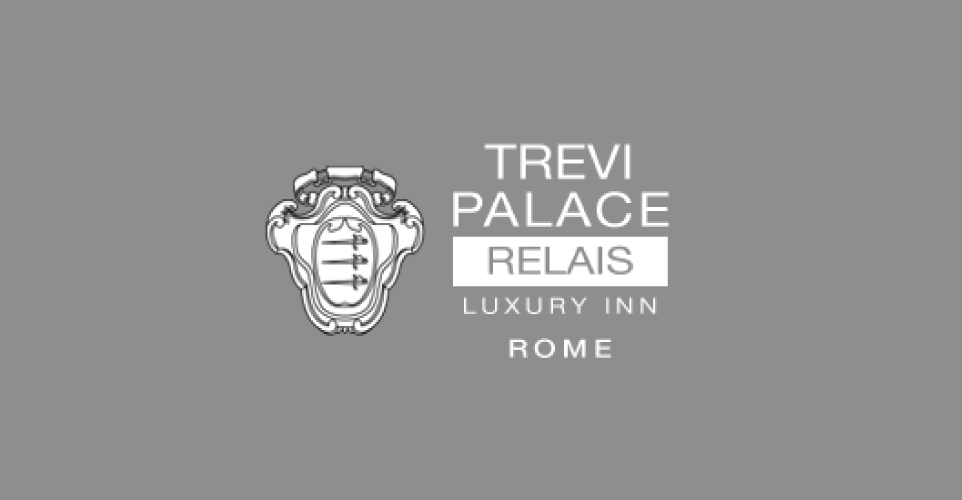
LOCATION
Rome – Navona
CONTACT US
Via del Lavatore, 30
00187 Rome
Phone. 06 690101
MORE PROPERTIES
Do you need more informations? Get in touch with us!



